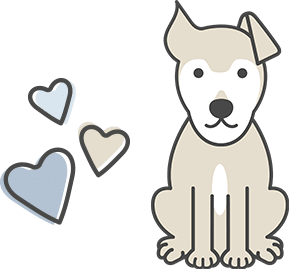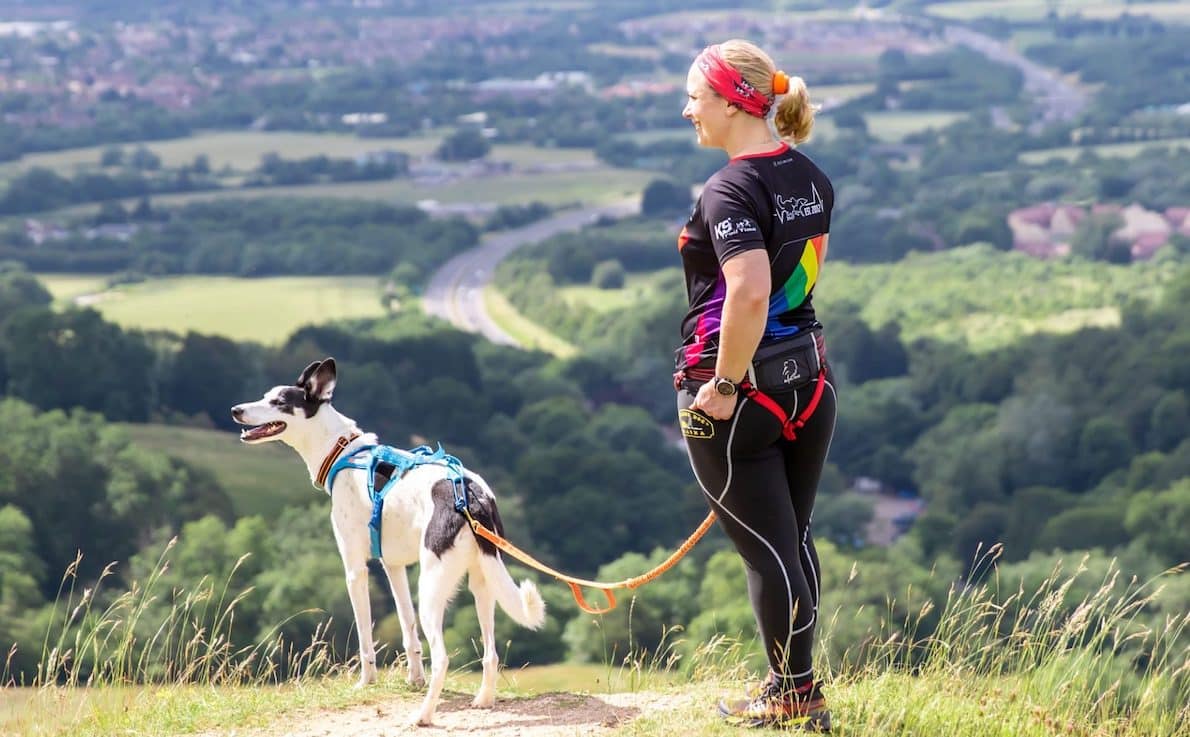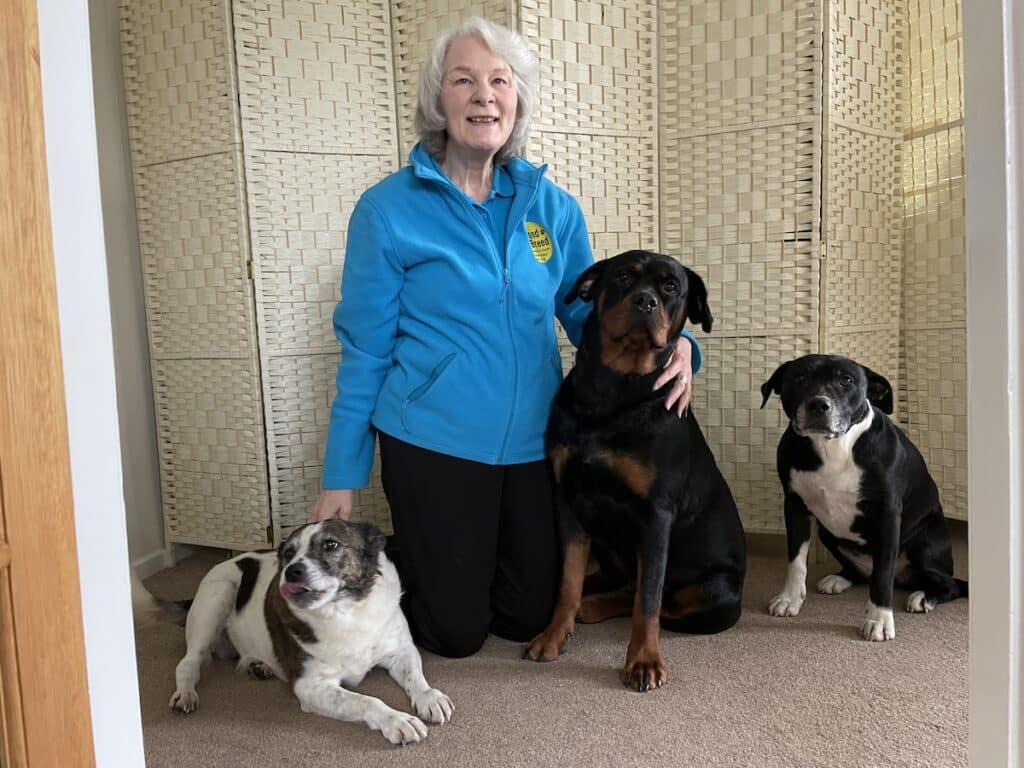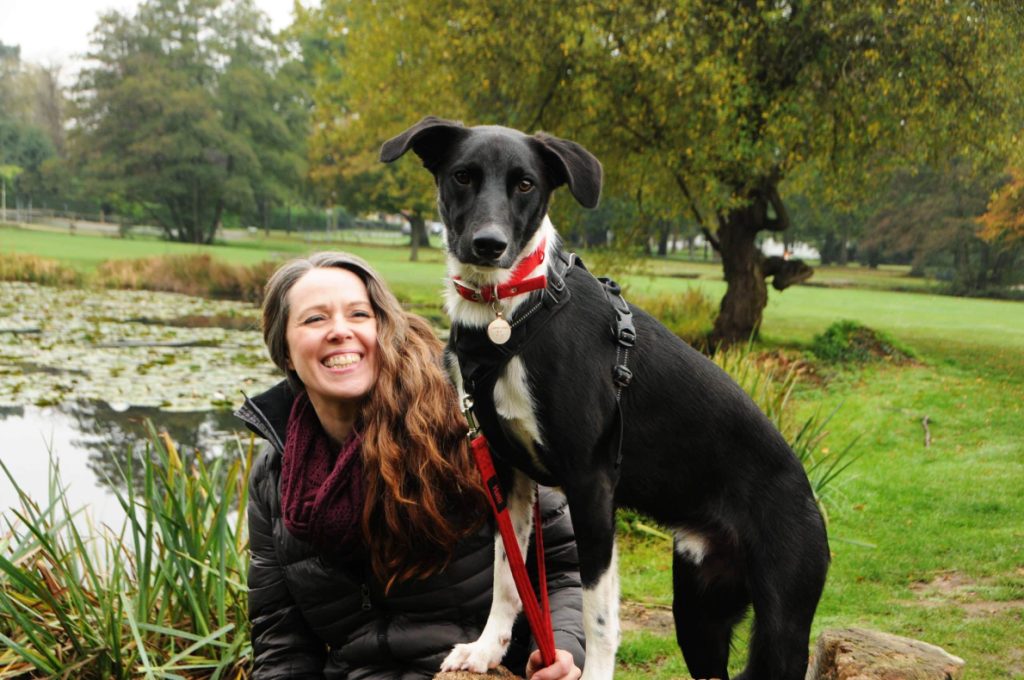Are you thinking of starting to run with your dog?
Our four legged friends make perfect personal trainers, and working out together helps you bond too.
It’s important to keep you and your dog safe while exercising.
Emily Thomas from K9Trail Time has been helping dog owners across the world enjoy canicross since 2012, providing advice, equipment and training, and even created the first qualification in the sport.
She’s showcased canicross at Crufts and dog events all over the UK, and runs her own canicross competitions.
Emily was recently invited on the Channel 5 show Dogs Behaving Badly to work with the family of Doodle Royce so they could enjoy running.
She eats, sleeps and breathes canicross, through her kit business K9Trail Time, training people to enjoy running with their dogs, and helping people who share her passion to become canicross instructors through Canicross Coach.
Emily has four dogs of her own, Donnie a Springer-Collie cross, 12, Yogi, a Husky, Greyhound, Saluki who is seven, Delta, a Collie-Spaniel cross, four, and Jareth, Greyhound, Saluki, Whippet who is two.
We chatted to her to get you the ultimate guide to running safely with your dog.
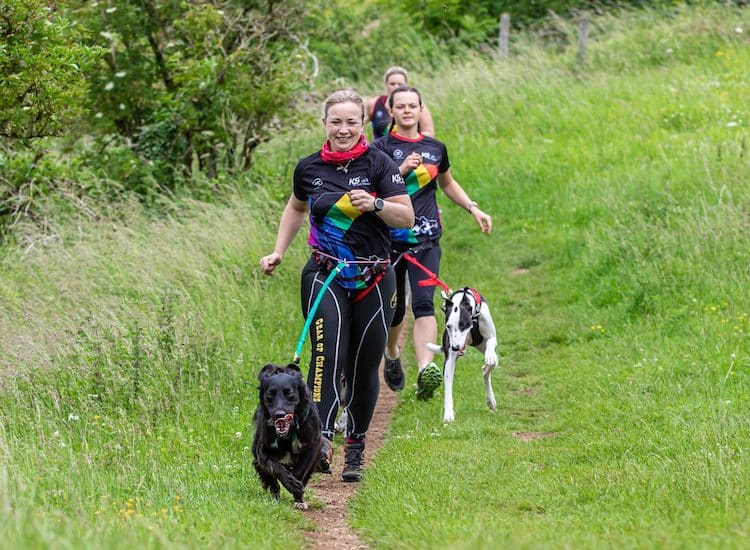
What are the key things to consider before starting canicross?
The current health and fitness of both you and your dog is the first thing to think about.
You’ll need to start slowly as with any new training plan and so knowing your base level of fitness will help to determine your starting point.
You’ll also need the proper equipment for you and your dog so you don’t risk injury to either of you.
Think about your local trails and what’s available to you that might be suitable environment for running with your dog.
An understanding your dog’s temperament and energy level will help you to know when your dog has had enough, because canicross should always be fun and leave your dog wanting more!

How can I check my dog’s fitness level to see if they’re suitable for canicross?
Make sure you have a clean bill of health from your vet before you start.
You’ll need to gradually increase your dog’s exercise over time, so following a Couch to 5K programme can be really useful.
Keep an eye on your dogs’ behaviour following canicross sessions to make sure they’re recovering quickly will ensure you’re not doing too much too soon.
Always monitor your dog during exercise for the signs of fatigue, discomfort, or breathing difficulties and if there is any sign of discomfort stop immediately.
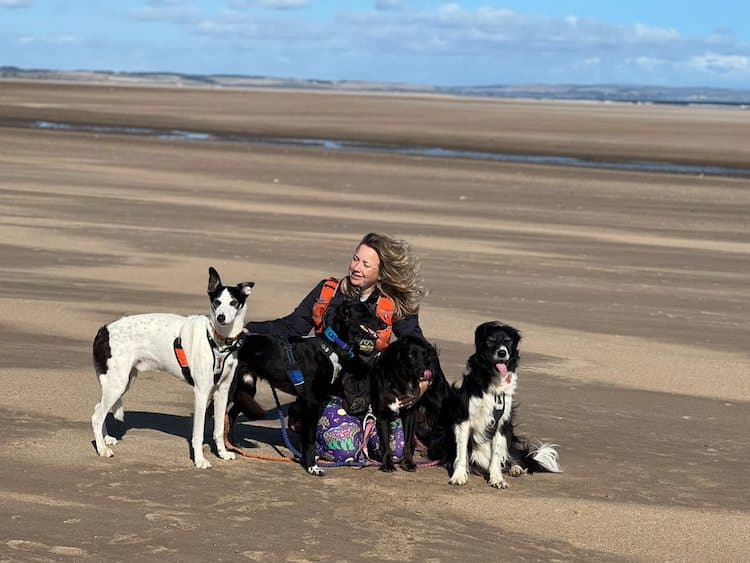
Do you find specific breeds or sizes of dogs are better suited for canicross?
If your dog has been bred with a job in mind then they usually have a focus and work ethic which can be well suited to canicross.
People believe that medium to large breeds with high energy levels and a desire to run are often well-suited but the smaller dogs are not to be discounted.
I’ve seen many of the smaller breeds excel in the sport because they are working breeds and enjoy having a job to do.
Breeds commonly associated with canicross include Siberian Huskies, German Shorthaired Pointers, Border Collies, and Spaniels, but any dog who is fit and healthy should be able to take part.
Expect to see more Pointers and Pointer crosses at the top level of the sport because they have the athleticism, work ethic and endurance to be able to race successfully.

What kit do I need to canicross?
The first and most important thing you’ll need is a specific dog sport harness, fitted for your dog and taking into account your dogs’ anatomy and running style.
This is probably the most tricky bit of getting yourself set up for canicrossing, and it’s important to find someone who knows how to properly fit the harness.
You’ll also need a belt for yourself which can be padded, lightweight, with leg straps or without leg straps, depending on what you prefer.
The last piece of equipment is the bungee lead to connect the two of you, it absorbs the shock of the pull and prevents injury to you and your dog.
You can find K9TrailTime stands at shows across the UK and we can help you with fitting harnesses and finding the right gear for you.
For updates on where we’re going to be, sign up for our newsletter here
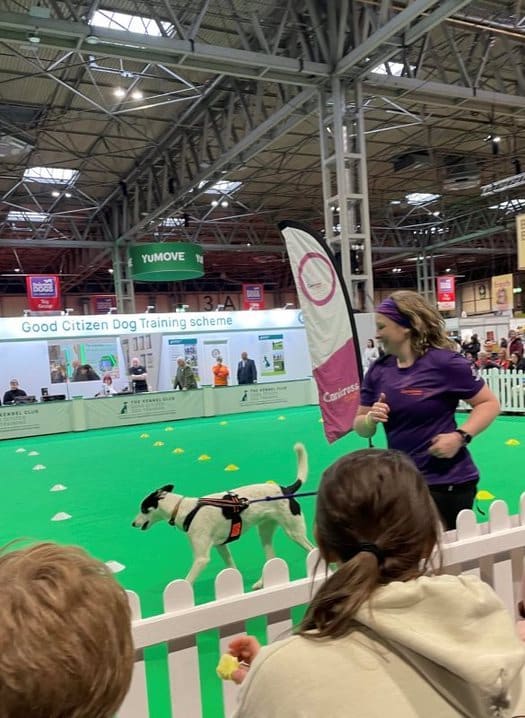
How do I introduce my dog to canicross so they have a positive experience?
Gradually introduce your dog to the equipment and exercise in a positive and controlled environment, making sure they associate the harness and experience as something positive.
Start with short and slow running sessions, gradually increasing the distance and speed and always try to end the session with your dog wanting to do more.
Always use positive reinforcement techniques when training with your dog and make the experience enjoyable for your dog by not overwhelming them with too much at once.
What precautions should I take to protect my dog’s paws and joints?
The main thing with dogs’ paws and joints is to avoid running on hot pavement or abrasive terrain, build up everything slowly and have a good warm up and cool down routine.
Warming up and cooling down helps to prevent injury and long term damage to your dogs’ muscles and joints and can also improve performance and gives you time to adjust your dogs’ mindset, to connect with you and build that bond between you.
Get in the habit of checking your dog’s paws for any signs of irritation or injury and if you’re concerned about anything at all consult with your vet for additional support.
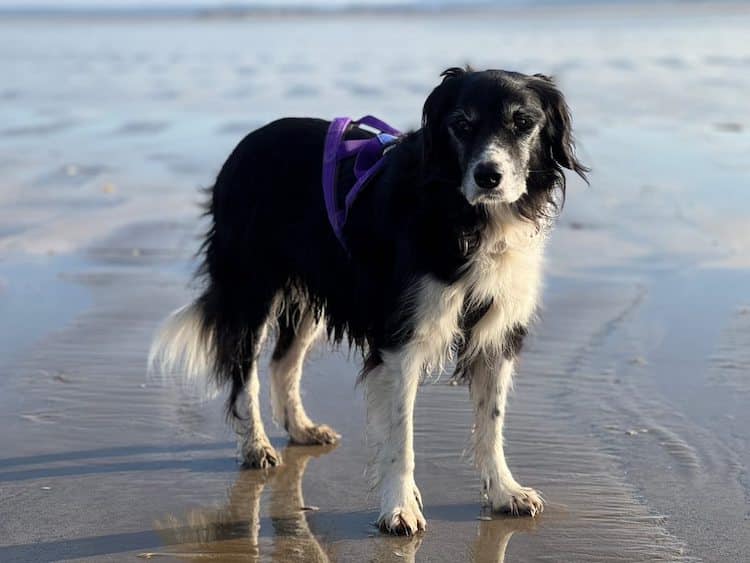
How can I make sure my dog stays hydrated and cool while we’re out running?
You should carry water and offer your dog regular hydration breaks during the run, particularly if your dog is very new to the sport.
Avoid running during the hottest parts of the day, especially in warm weather and even in cooler months, your dog can still overheat if they are working hard in harness.
Signs of overheating in your dog are excessive panting or slowing down and seeking shade, if your dog doesn’t want to carry on the run, you need to stop immediately.
Consider that the canicross racing season tends to run from autumn, through winter into early spring and the reasons for this.
Although here in the UK we can have some awful summer weather, recently we have been having some much warmer temperatures and our dogs aren’t acclimated to this.
Adjust your running routine accordingly to accommodate temperature changes, particularly when the weather moves very quickly from the cool to warm and more importantly higher humidity.
The humidity reduces a dogs’ ability to cool itself so be aware that even at low temperatures, high humidity can be a problem for most dogs not being able to efficiently cool themselves down, as they don’t sweat like we do.
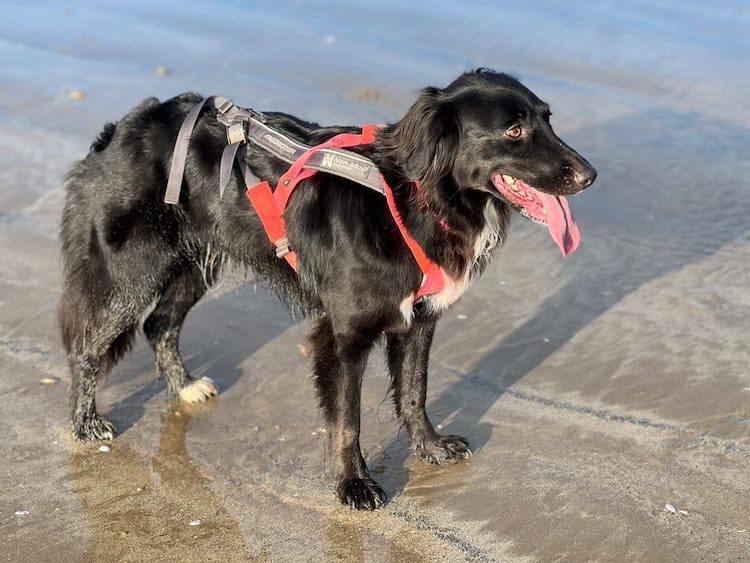
What signs should I look for that might signal my dog needs to rest?
If you notice your dog slowing down significantly or seems reluctant to continue running, panting heavily or drooling, limping or showing any signs of pain or discomfort or any abnormal behaviour in general, then you should stop immediately.
If you notice any prolonged or repeated signs of needing to rest then have your dog checked over by a vet.
We all have times when we need extra rest so don’t underestimate the importance of rest for your dog too.
Fest helps our bodies recover and so factor in rest days for your dog even if they are high energy and seem not to need it!
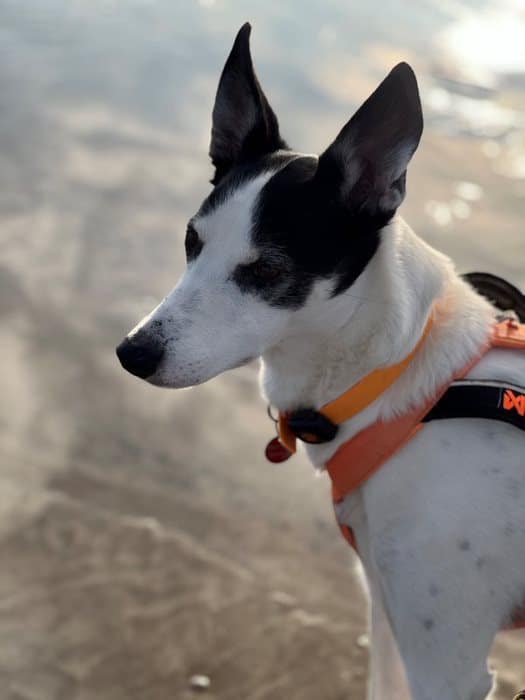
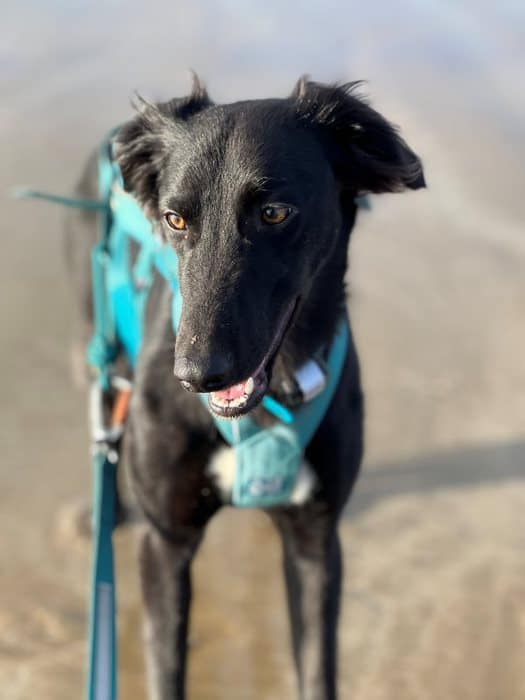
Are there any training techniques that can help boost my dog’s strength for canicross?
There are canine fitness trainers who can help you incorporate a conditioning programme into your dogs’ weekly exercise routine which should include specific core strengthening exercises.
If you get your dog checked by a veterinary physiotherapist they can prescribe exercise for building strength for your dogs’ specific weaknesses.
You can also do the canine equivalent of cross training for humans, so swimming and tailored hydrotherapy in a pool or treadmill is very good way to build your dogs’ general fitness and condition to prevent injury and build strength.
Hill walking and on lead walking can also help to build your dogs’ condition as any slow and controlled exercise can have more of an impact than just letting them run around off lead.
Always consult with a professional therapist for specific training plans tailored to canicross so you can be sure the activities you are doing are suitable for your dog and their exercise regime.
What happens when they need a poo?
Ideally, use you warming up routine so your dog has time to poo before starting the main run session, but if your dog needs to go, find a suitable spot off the trail and clean up after them.
Many canicrossers carry a small separate pouch to put poo bags in until you can find a bin.
What are the benefits of running with my dog?
The great thing about canicross is you and your dog will both reap the same rewards and these are some of the key advantages…
Fitness
There is no denying that if you start running with your dog, or even cani-hiking which is a brisk walking version, you and your dog will start to increase your fitness together. Canicross is perfect for dogs who can’t otherwise be let off the lead, as you are exercising your dog in a safe and controlled way. When you attach your dog to you to take part, you will also build body strength and improve your balance.
Health
It’s now estimated that as many as a third of dogs nationwide are overweight and obesity is a concern for us humans too, with many people looking for ways to improve their overall health, canicross can be a fun way to potentially prolong the life of your dog and yourself.
Mental Health
Our focus on mental health has also increased and one of the things often suggested to help when negativity takes over, is to exercise and particularly outdoor exercise where we can get away from the stresses and strains of every-day life. If you team this up with the positive behavioural changes that many dog owners report when they start canicross, then you have the perfect way to keep both your minds healthy.
Motivation
If you start an exercise programme and struggle to keep motivated with it, there can be no better motivator than a waggy tail and excited four-legged friend who will keep you company even if you find it tough at times. Running with your dog gives you a purpose and a reason to continue the activity.
Social interactions
Running with your dog will inevitably draw you into a world with like-minded dog people and because all the dogs are on lead, it can also allow your dog to be calmly and safely introduced to other dogs, surrounded by people who understand if your dog needs a bit more space.
Fun!
Running with your dog builds a bond between you through the training and shared physical activity which sees you working as a team. There’s nothing quite like the feeling of getting home and seeing your dog happy, calm and tired because you’ve had the fun of exploring the countryside together.
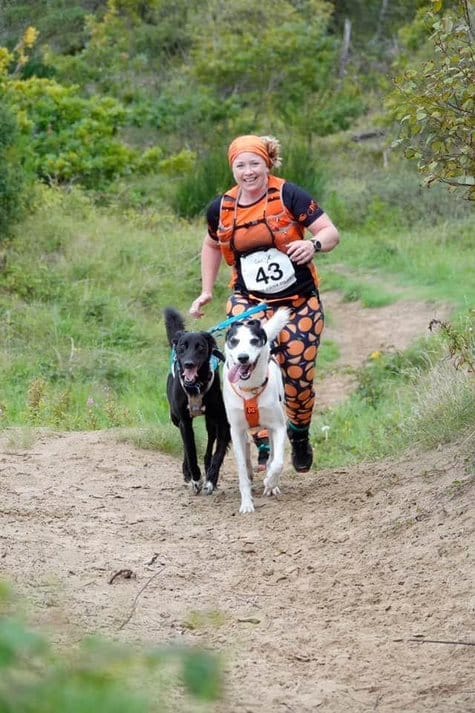
What’s your favourite thing about canicrossing?
The connection you build with your dog, they look forward to spending that time I the day outside with you and you work as a team to negotiate the countryside together.
I wouldn’t be motivated enough to run on my own and the fact that I know I’m creating a better bond with my dogs through activity is all the motivation I need to keep getting out there.
How to find out more about Emily
Visit her website: https://www.k9trailtime.com
Get Emily’s newsletter and a free short introduction to canicross class here: https://www.subscribepage.com/canicrossinformation
Follow on Facebook: https://www.facebook.com/K9TrailTime
Twitter/X: https://twitter.com/K9TrailTime
Find Emily on LinkedIn: https://www.linkedin.com/in/emilythomas-k9professional
Check out videos YouTube: https://www.youtube.com/user/K9TrailTime
Connect on Instagram: https://www.instagram.com/k9trailtime

